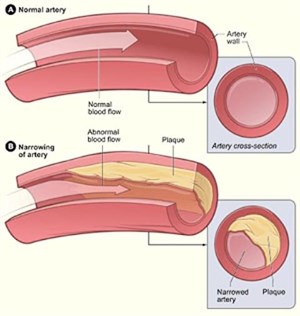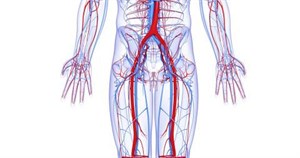Blood vessels accommodate the flow of blood around the body, to provide oxygen and nutrients to organs and tissues, in order for them to function properly. There are 2 different types of blood vessel, arteries and veins.
Arteries carry high pressure oxygen rich blood from the heart to the body’s organs and tissues.
Veins carry low pressure, deoxygenated blood from the body’s organ and tissues back to the heart; from there it is pumped to the lungs to collect oxygen, and then pumped back to the body through the arteries.
Any narrowing, blockage, or flow abnormality within an artery or vein can disrupt the balance of this system, affecting the organ, tissue, or limb supplied by it.
Why so arteries become blocked?
Healthy arteries have smooth inner walls and blood flows through them easily. Some people, however, develop clogged arteries. Clogged arteries result from a build-up of a substance called plaque on the inner walls of the arteries. Arterial plaque can reduce blood flow or, in some instances, block it altogether.
Clogged arteries greatly increase the likelihood of heart attack, stroke , and even death. Because of these dangers, it is important to be aware, no matter how old you are, of the causes of artery plaque and treatment strategies to prevent serious consequences.
What causes arterial plaque?
Plaque that accumulates on the inner walls of your arteries is made from various substances that circulate in your blood. These include calcium, fat, cholesterol , cellular waste, and fibrin, a material involved in blood clotting. In response to plaque build-up, cells in your artery walls multiply and secrete additional substances that can worsen the state of clogged arteries.
As plaque deposits grow, a condition called atherosclerosis results. This condition causes the arteries to narrow and harden.
Although experts don’t know for sure what starts atherosclerosis, the process seems to stem from damage to the arterial wall. This damage, which enables the deposition of plaque, may result from risk factors including:
High “bad” cholesterol and low “good” cholesterol.High levels of “bad” cholesterol, or low-density lipoprotein ( LDL ), are major contributors to arterial plaque formation. But that doesn’t tell the whole story. Everyone also has “good” cholesterol, or high-density lipoprotein ( HDL ), circulating in the blood. HDL is believed to remove some of the bad cholesterol from plaque in clogged arteries and transport it back to the liver where it is eliminated.
High blood pressure . Having high blood pressure increases the rate at which arterial plaque builds up. It also hastens the hardening of clogged arteries.
Cigarette smoke. Cigarette smoke increases the rate of atherosclerosis in the arteries of the heart, legs, and the aorta— the largest artery in the body
Diagram of healthy and blocked arteries

 In this section
In this section
